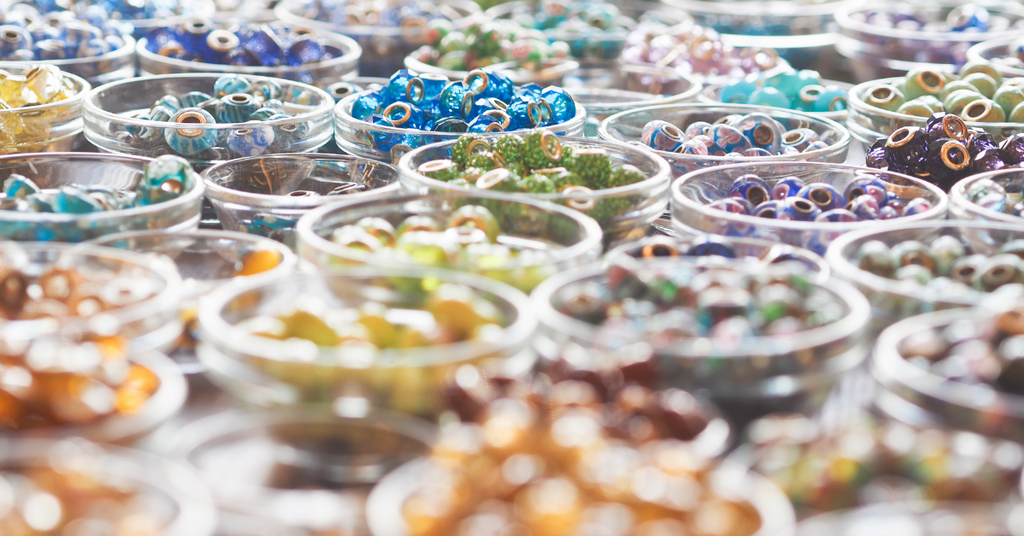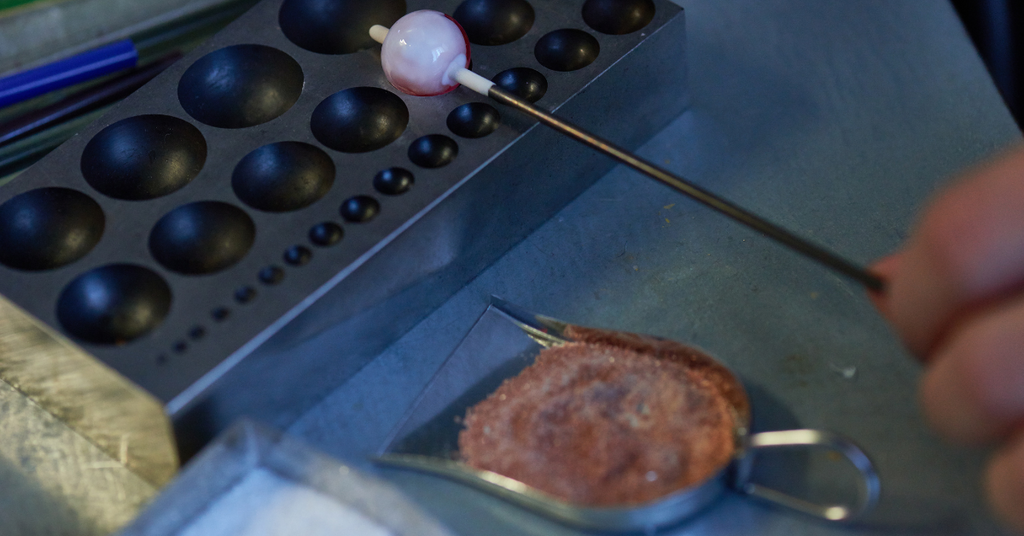
What are Lampwork Beads?

Lampworkers create beads by melting narrow rods of glass with the flame of a torch. The molten glass is wound around a mandrel, a thin length of stainless steel. The space occupied by the mandrel becomes the hole through the bead. Turning the mandrel and holding it in different positions allows gravity to help the bead take form, but tools are also used to push and pull it into shape.
A lampwork artist understands the glass and the torch, knowing how much heat it takes for glass to flow, how much heat can be applied to a bead that's already shaped before it becomes molten again and loses shape, when to add decorative effects such as frit, and how different colors of glass interact with each other. Lampworking is a skill that takes a great deal of practice.
Beads can be as plain or as decorative as the artist likes. Multiple layers of glass can be added, switching colors to create the desired effects. Small dots of color can be left as bumps on the bead's surface, manipulated to form designs or plunged into the center of the bead for a totally different look. Fine lines are possible when a lampwork artist works with tiny rods of glass, almost as if painting with a glass paintbrush.
Beads Must Be Carefully Annealed
Glass shrinks as it cools. Bringing a bead out of the flame and leaving it in the open air allows the outside of the bead to cool rapidly, while the inside is still burning hot. The stress point between the cool, shrinking glass and the hot center begins to grow, often causing the bead to crack.
The best way to cool beads is in a kiln, where temperatures can be closely regulated. The beadmaker "soaks" the beads to make sure that all glass within them is the same temperature, then slowly steps-down the heat to bring them to room temperature.



































